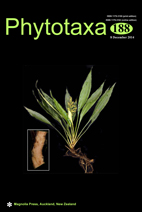Abstract
Aristolochia Linneaus (1753: 960), the largest genus of Aristolochiaceae, consists of about 400 species (Hwang, 1988, Ma, 1989) but most of them are in the New World (Hou, 1984: 53; Huang et al. 2003: 246). It is widely distributed throughout tropics and subtropics but also extends into warm temperate regions. However, the genus is also rich in Asia, particularly in eastern and southern Asia, with more than 70 species (Ma, 1989). In Vietnam, there are 13 species and 1 variety (Ban, 2003, Lecomte, 1910, Ho, 2000, Do et al. 2014). During a field expedition to Thanh Hoa Province, Xuan Lien Nature Reserve, an unknown species of Aristolochia was collected and studied in the Vietnamese Herbaria; in comparison with other species of the genus, particularly the floral and fruit characteristics of those in the nearby area, it became obvious that it indeed represented a species new to science, which we described here.

